Sales Order
Let's now walk-through the transfer of data from Agiliron to QuickBooks - we will start with Sales Orders. These could be orders that have come in from customers in the various channels that you sell through OR one that your sales rep creates directly in the Agiliron CRM.
Sales Orders can be found under the "Orders" tab on the left menu panel.
In the example shown in the images below, we have 2 Sales Orders:
- The first one, Order 37, which has been marked as "Paid" and;
- The second one, Order 38, that has NOT been marked as "Paid".
Note: We have created a custom view for this module that displays the order status.
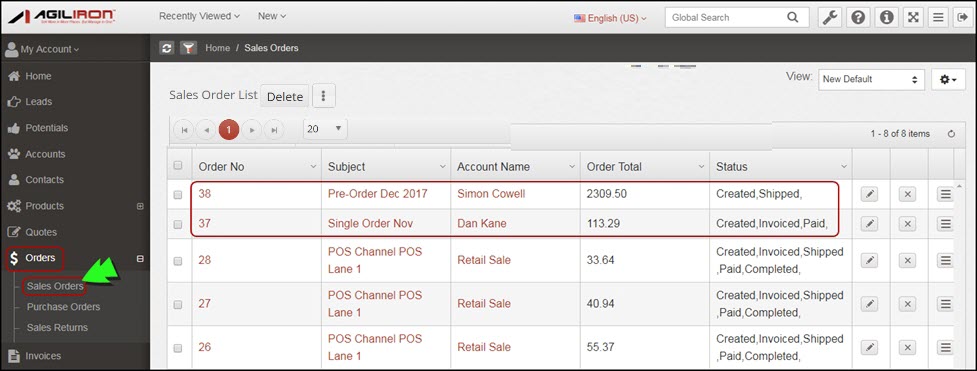
Details for Order 37 are shown below.
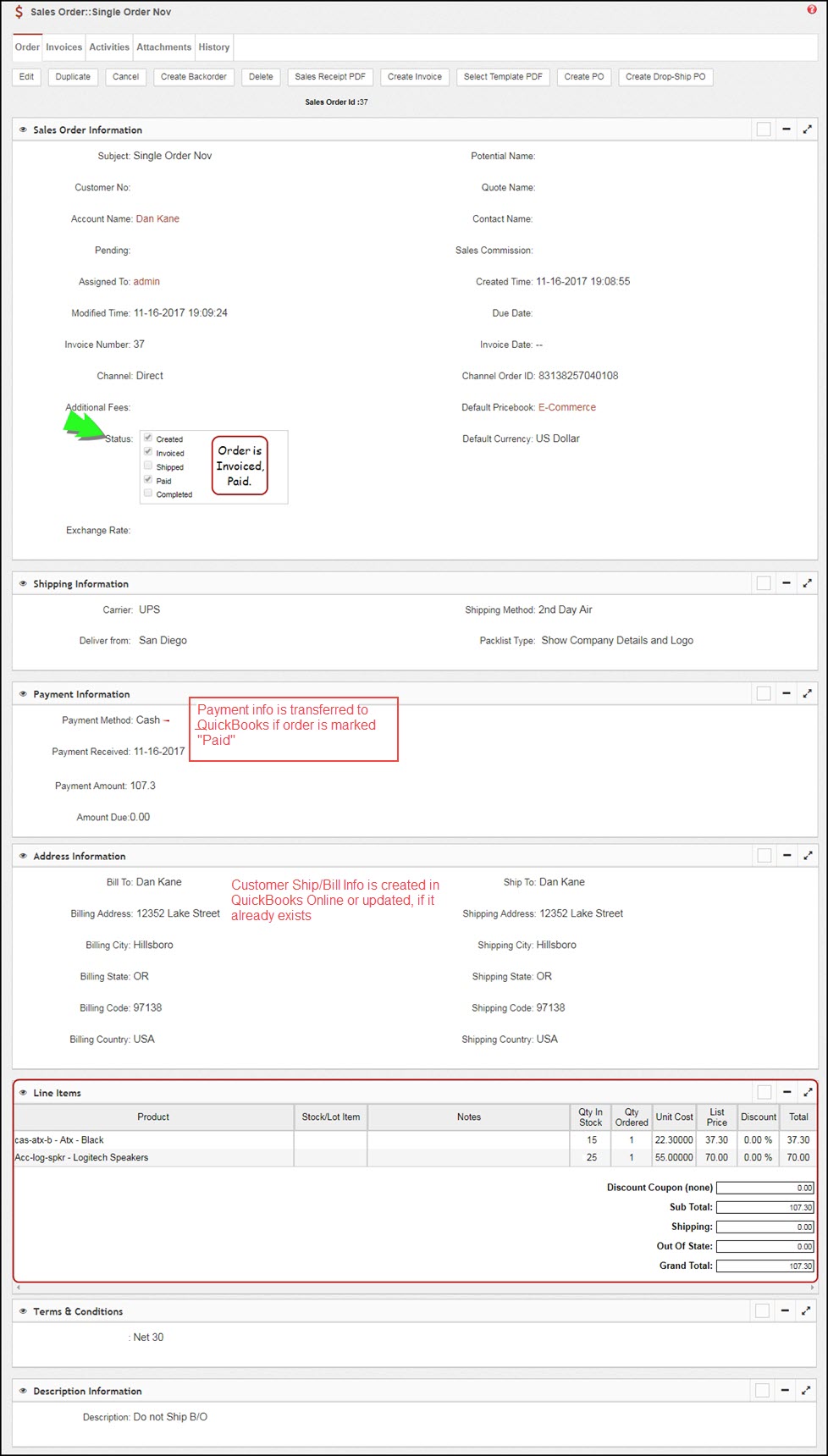
Details for Order 38 are shown below.
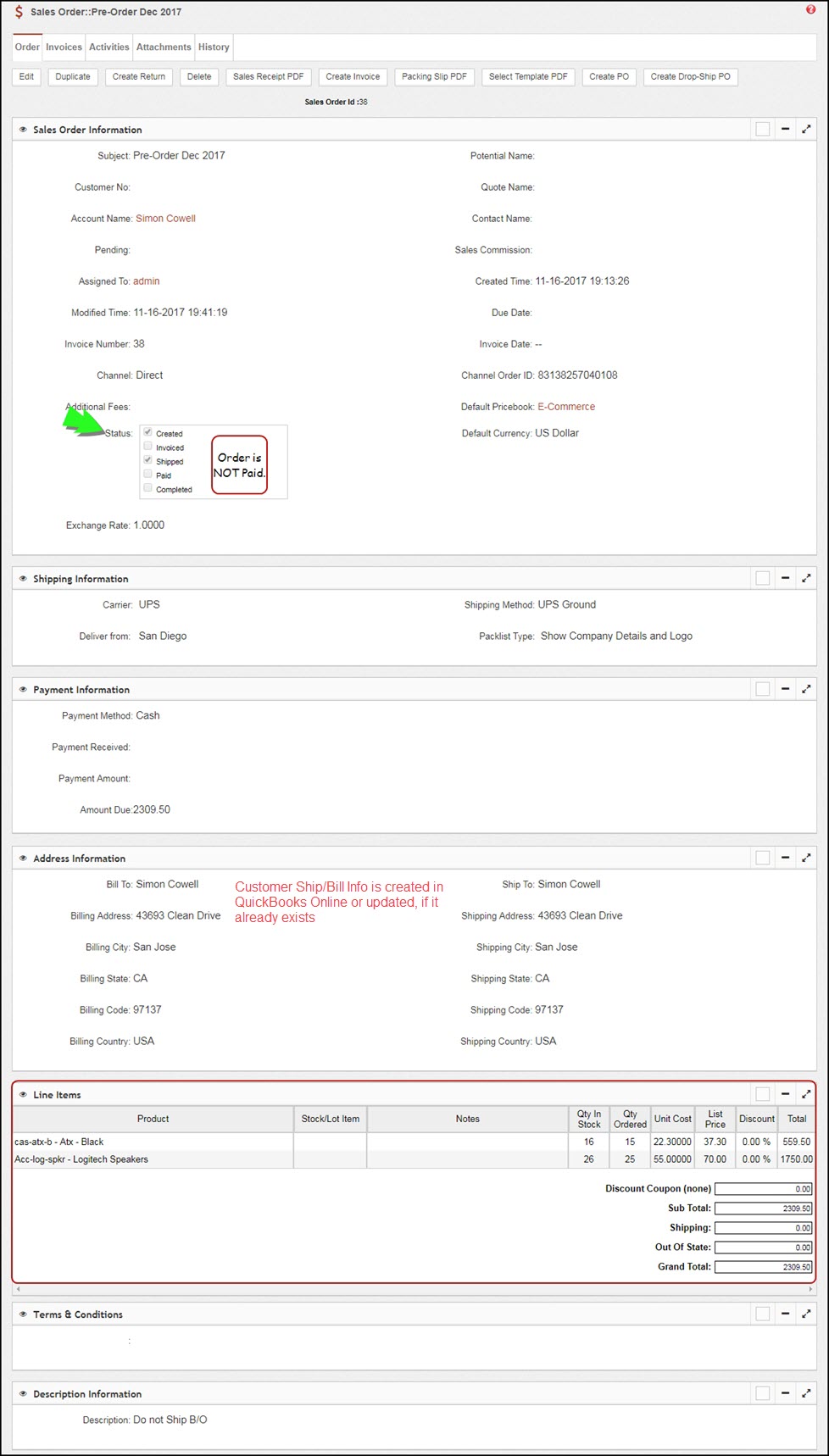
Now let's launch:
- "QuickBooks" (be sure to open the right company file) and;
- the "Agiliron Sync Application" on your Windows computer.
- The "Sync Sales Orders From Agiliron" tab is displayed by default.
Here you will see that the system recognizes that there are Sales Orders that are waiting to be synchronized with QuickBooks.
Let's go ahead and click on the "Sync to QuickBooks" button. This now transfers this order information to your QuickBooks Company file.
Note: It is important to note here that you do not need to do this for every order. As the orders come in, the system will recognize and keep accumulating them till you initiate the sync.
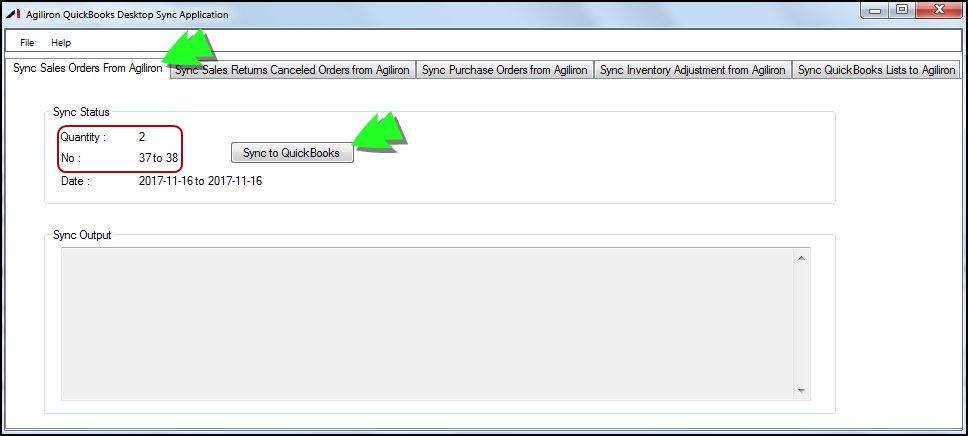
Let's take a look at the Sales Receipt that has now been created.
- Navigate to the "Customers" tab.
- Select the "Customer Name" from the list.
- Select the Sales Order that was imported from Agiliron.
You can see that all the details have come in correctly - including the Customer Information, the Payment and Shipping Methods, Product Line items, Sales Order Description, Taxes and other elements of the order.
- In our Agiliron instance under Settings > QuickBooks, we have set the "Use as Transaction Date" to "Created Date". For these orders, the date displayed in QuickBooks (ie: the Sales Receipt Date for Order 37) reflects the dates the orders were created in Agiliron.
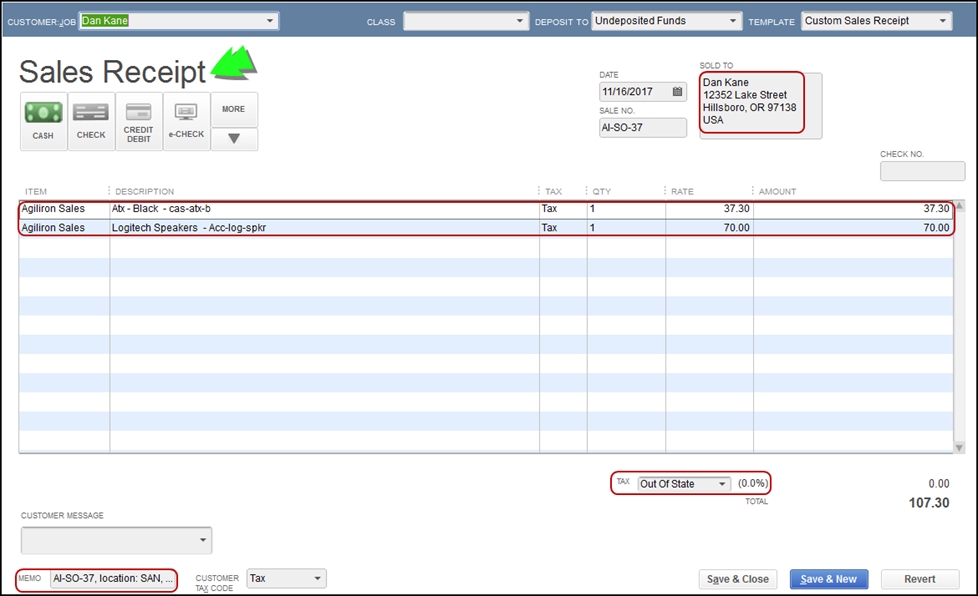
Let's also look for a Sales Order that has NOT been Paid.
- This time you will notice that an Invoice has been created in QuickBooks since the order has not been paid.
- You can see that all the details have come in correctly - including the Customer Information, the Payment and Shipping Methods, Product Line items, Taxes and other elements of the order.
- In our Agiliron instance under Settings > QuickBooks, we have set the "Use as Transaction Date" to "Created Date". For these orders, the date that displays in QuickBooks (ie: the Sales Receipt Date for Order 38) reflects the dates the orders were created in Agiliron.

One final thing we will want to look at here is the adjustments made to COGS and Inventory Asset accounts for the 2 orders that just came in.
Let's go to the Chart of Accounts and bring up the Inventory Asset and COGS Accounts - here you can see entries that decrease the Inventory Asset for the sales that have been made while increasing the Cost of Goods Sold account by the unit cost of the products sold.

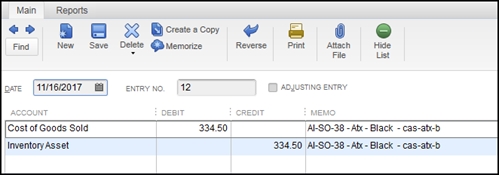
Updated 11 months ago
